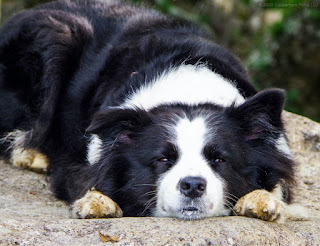I haven't had the opportunity to go out into the wild for a photo shoot recently. However, while doing some business in downtown Yokohama, I took the long way home through Yokohama's Chinatown and the Osanbashi Pier.
Most of the shops in Chinatown were closed--either because of COVID-19, because it was a Tuesday, or maybe a combination of both. I tried to get a few shots that might exemplify Chinatown with all of the colorful signs and hanging red lanterns. No matter where I went, however, there were so many cement power poles that totally detracted from the mood of a typical day in Chinatown. Maybe if there were more crowds, that would draw the viewer's attention away from the power poles and electric lines.
Not all was lost however. I came across a temple called Kantei-Byo (関帝廟). According information posted online by what seems to be a community or neighborhood association of Chinatown, the temple is dedicated to a famous general depicted in a Chinese historical novel who became an inspiration to Chinese immigrants arriving in Japan starting back in the late 1870s. The general was revered for his sense of loyalty, righteousness, and business skills--traits that held a special appeal to the new immigrants who must have struggled as they started building a community, starting new business, and making a new start for the lives of their families.
Kantei-Byo Temple is now a popular tourist destination as well as a holy site where the local Chinese can have their spiritual, social and cultural needs met.
Originally built in 1862, the temple was rebuilt after the Great Kanto Earthquake in 1923. It was rebuilt again after the fire bombing during WWII, and rebuilt one more time after a fire in 1981 that was caused by a lightning strike. Tragically, that temple had to be rebuilt a fourth time in 1986 after suffering from another fire that engulfed the structure.
Originally built in 1862, the temple was rebuilt after the Great Kanto Earthquake in 1923. It was rebuilt again after the fire bombing during WWII, and rebuilt one more time after a fire in 1981 that was caused by a lightning strike. Tragically, that temple had to be rebuilt a fourth time in 1986 after suffering from another fire that engulfed the structure.
No matter where you go in Chinatown, it's hard not to miss the various designs and postures of dragons.
As evening got darker, I was fortunate to come across one of many dragons on the roofline of Kantei-Byo Temple. From what I understand, dragons are a symbol of power, strength, and good luck for many people in East Asian cultures. They don't seem to hold the same persona of evil and wickedness as more commonly found in western literature or modern pop culture.
Ceramic Chinese Dragon on Roof of Chinese Temple in Chinatown
Pentax KP 88 mm ISO 100 for 0.8 sec. at ƒ/5.6
Portfolio:
The eastern entry to Yokohama Chinatown is called the Sunrise Gate and “protects” Chinatown from east. The primary color associated with this gate is blue as its guardian deity is the Azure Dragon. This dragon is also depicted as the god of spring and prosperity, is the guardian deity for the east, and is always colored in tones of blue.
Eastern Gate to Yokohama Chinatown
Pentax KP 36 mm ISO 100 for 15.0 sec. at ƒ/18
#gate #guardian #deity #Chinese #Chinatown #Yokohama #Japan
#門 #中華街東門 #朝陽門 #中華街 #横浜
Portfolio:
The shot above was taken at an angle from the right. The best position for taking a shot with a tripod would have put me right in the middle of a street with somewhat heavy traffic. Another and maybe better option would have been to back up to the park that is about two blocks away and position a telephoto lens on the tripod and just patiently wait for a moment with no traffic crossing 3 different intersections. This kind of shot might be achieved at 2:00 or 3:00 a.m. when most of the city is asleep.
Only two shots were semi-presentable during this mini photo shoot. I would like to come back again and try some other shot with more people or maybe after a rain storm at night when the ground is reflecting more light.

Pix4Japan by Daisei Iketani is licensed under a Creative Commons Attribution-NonCommercial-ShareAlike 4.0 International License.
Based on a work at https://pix4japan.blogspot.com.
Permissions beyond the scope of this license may be available at https://pix4japan.myportfolio.com.































